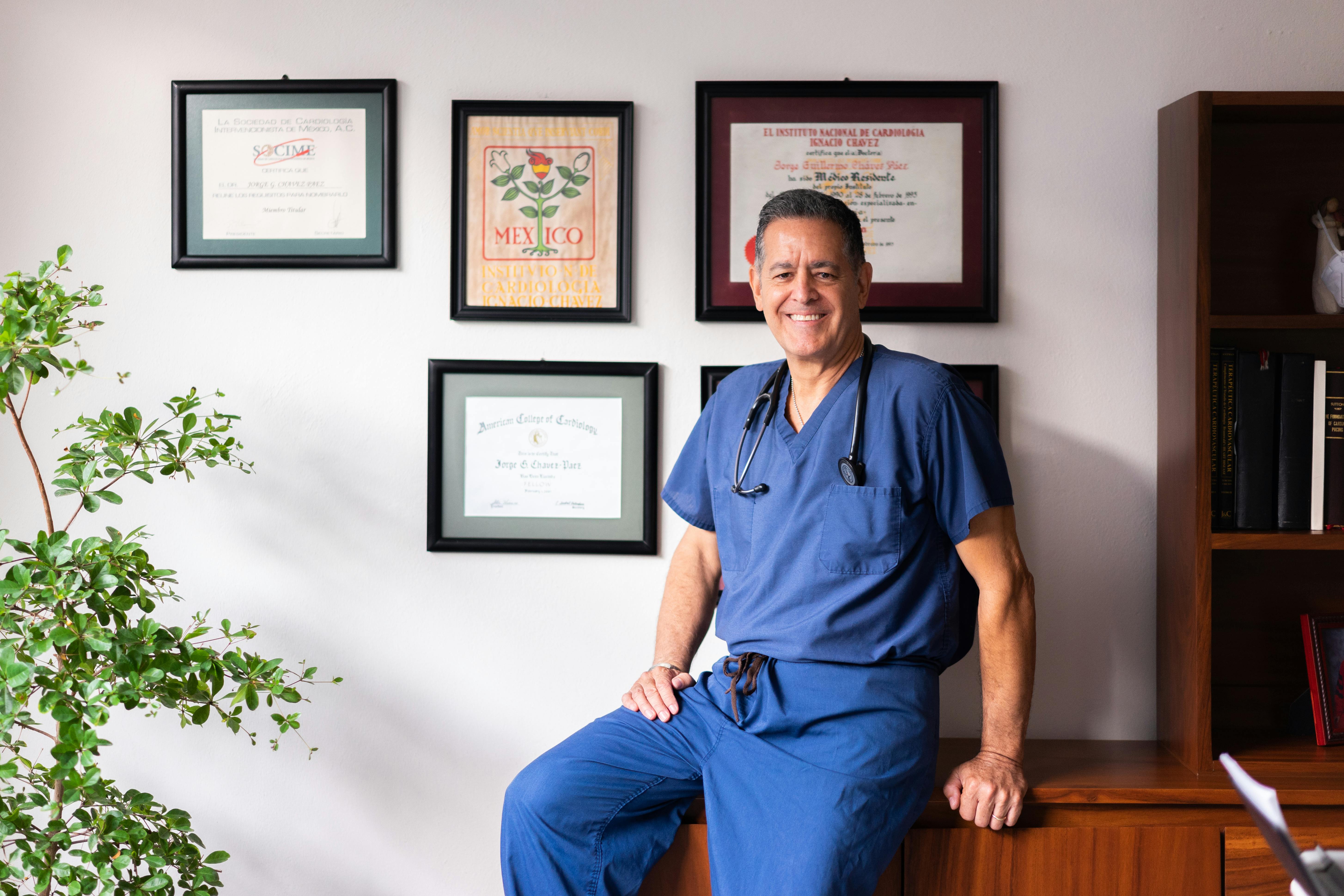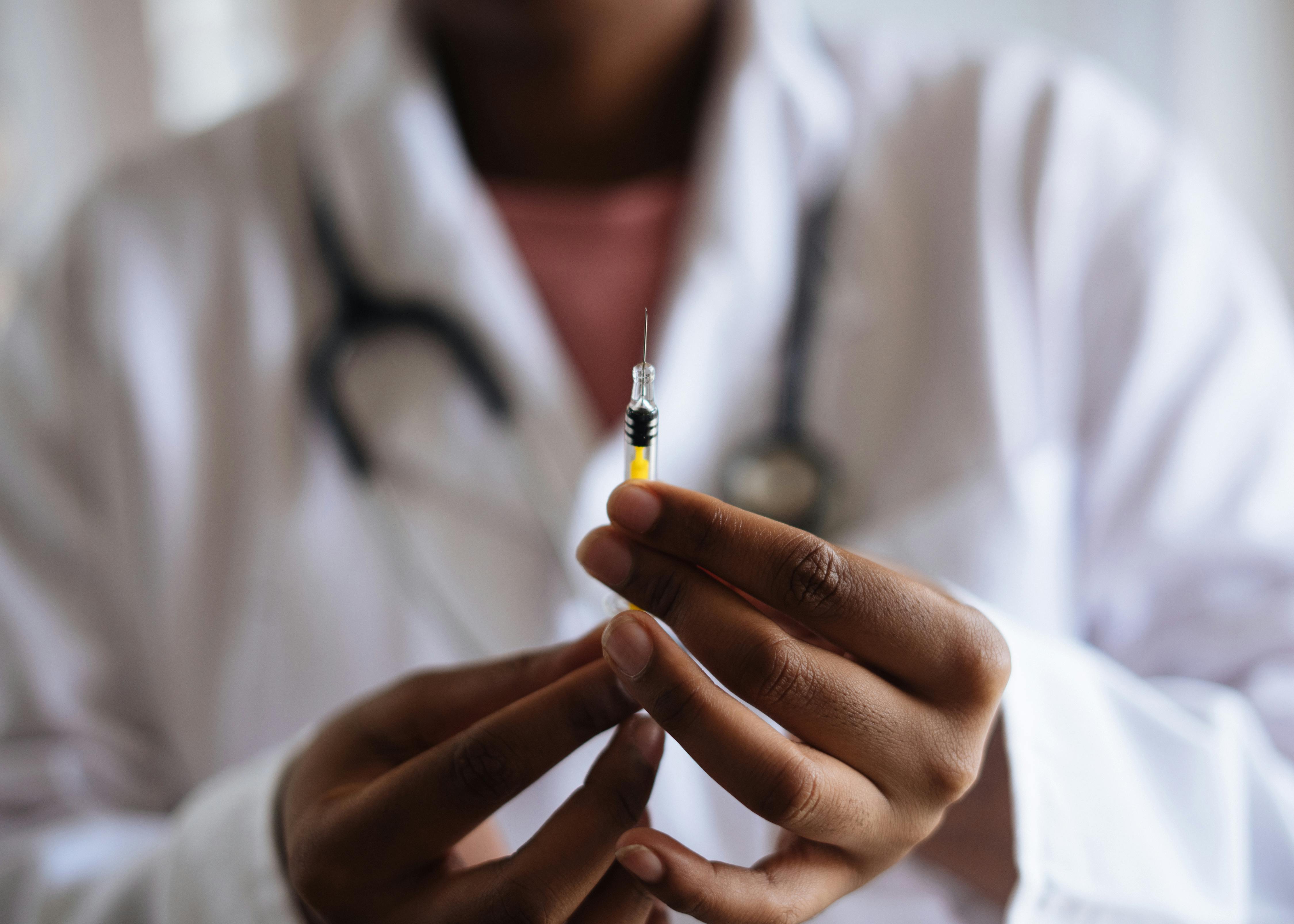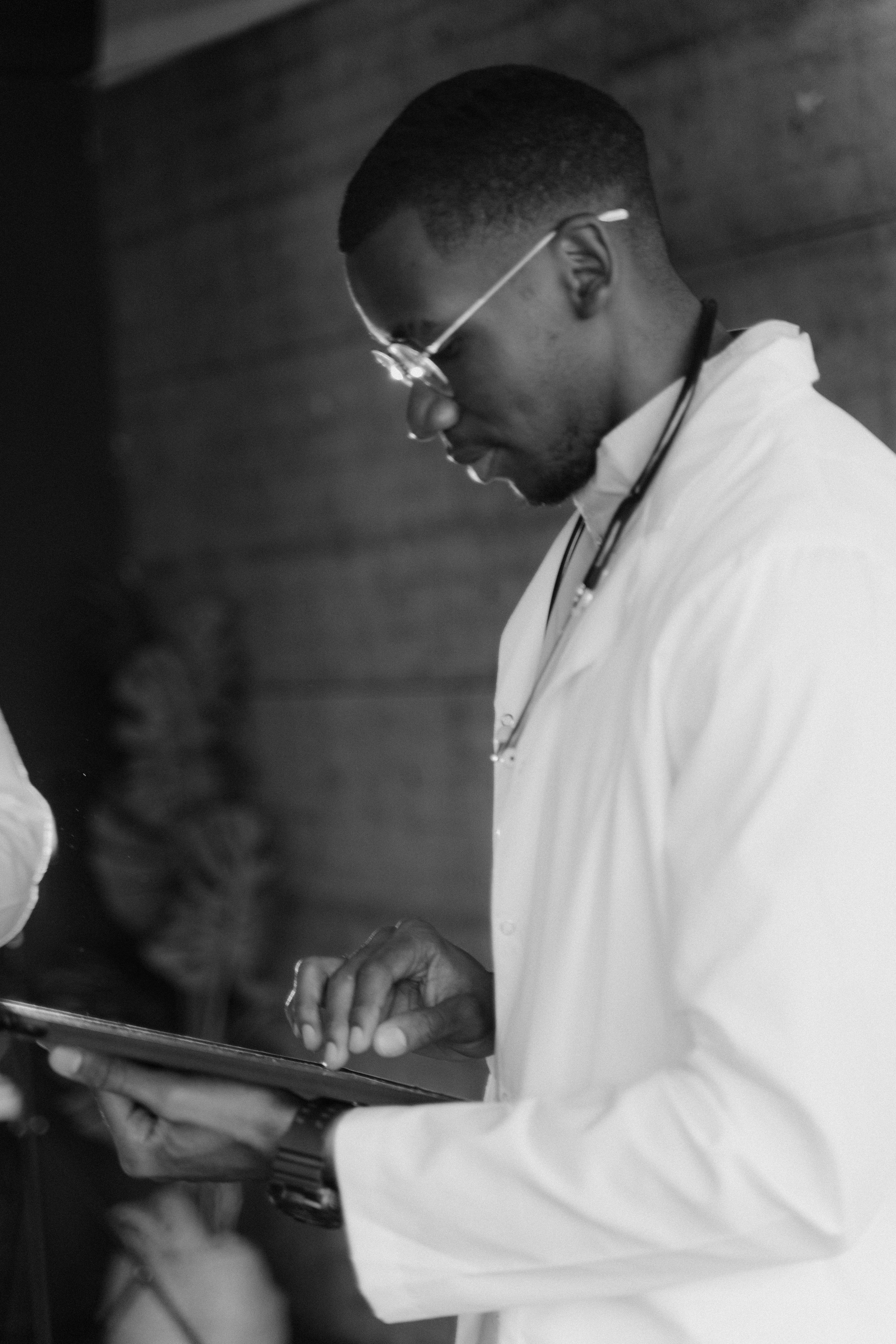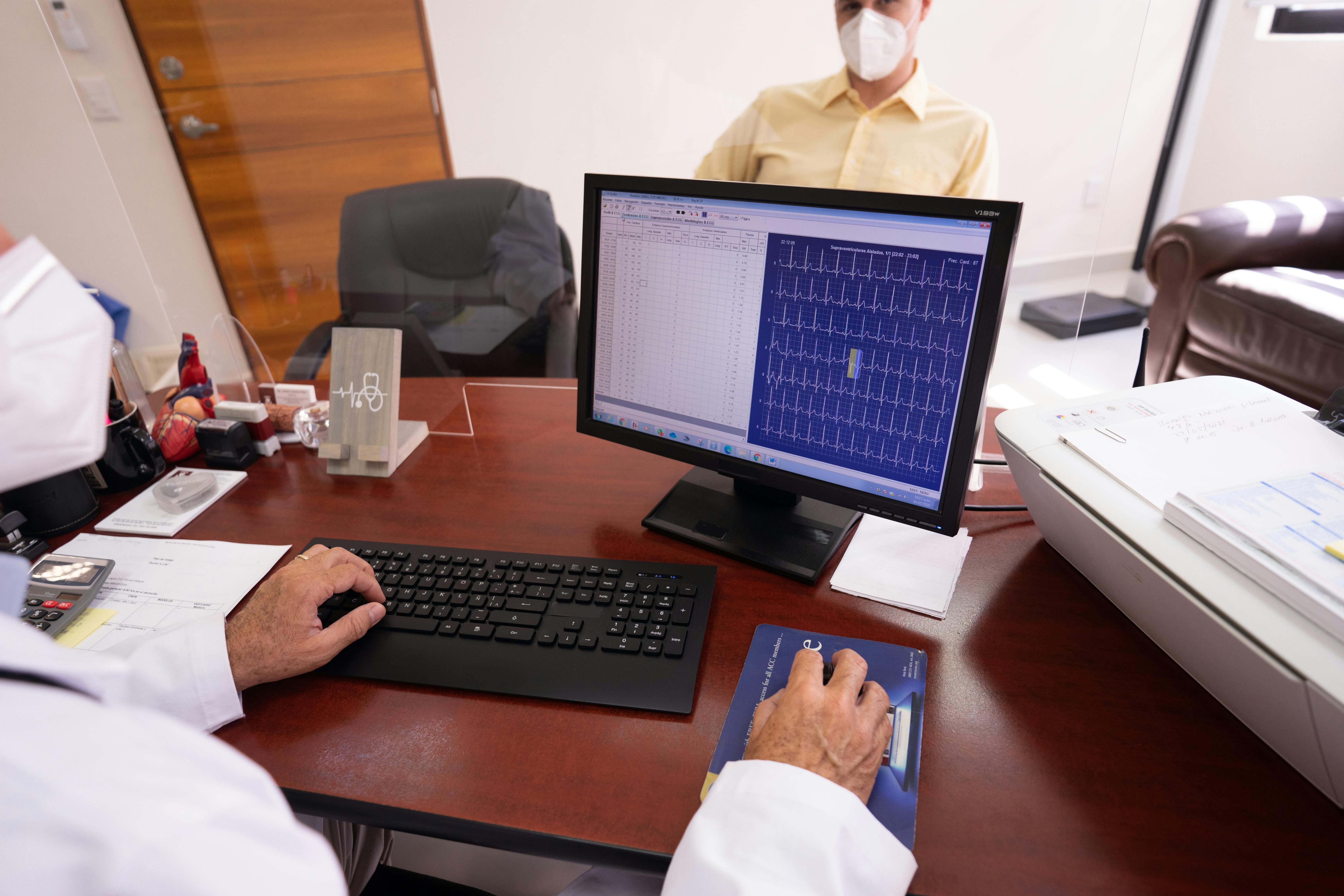The Dawn of a New Medical Era
In 2025, healthcare in the United States stands at a turning point unlike any other in its history. The convergence of artificial intelligence, data analytics, and biotechnology has not only accelerated medical innovation — it has redefined what it means to be “healthy.” From predicting diseases before symptoms appear to tailoring treatments to each individual’s genetic code, AI has transformed the art of healing into a science of precision.

Gone are the days when doctors relied solely on intuition and experience. Today’s physicians partner with algorithms that process billions of data points — from medical imaging to DNA sequencing — and deliver insights that even the sharpest human minds might overlook. It’s not a replacement for doctors; it’s an evolution of medicine itself.
The transformation began subtly. Hospitals started using machine learning for scheduling, predicting ER admissions, and optimizing bed management. But as AI matured, it began entering the sacred spaces of diagnostics, surgery, and mental health — domains once thought untouchable by machines.
According to the U.S. Department of Health and Human Services, over 67% of hospitals in 2025 now use some form of AI-driven system, whether for imaging, administrative automation, or predictive patient care. What was once a futuristic fantasy has become a daily reality.

Yet, this revolution isn’t just about machines. It’s about the data — and the humans who wield it. Data scientists, clinicians, and engineers are now collaborating to build systems that can “see” cancer in its earliest stage, predict cardiac arrests hours before they happen, and even detect depression from a patient’s voice tone.
As we dive deeper into this new age of medicine, one truth becomes clear: healthcare is no longer reactive — it’s predictive, personalized, and powered by intelligence.
Predictive Medicine: The End of Guesswork
One of the most remarkable outcomes of AI in healthcare is the rise of predictive medicine. Traditional healthcare waits for illness to strike — predictive care prevents it. By analyzing a patient’s health history, lifestyle, genetic makeup, and even location-based data, algorithms can forecast potential diseases with astonishing accuracy.

For instance, IBM Watson’s AI can now identify patients at high risk for Type 2 diabetes nearly **five years** before symptoms appear. Similar systems used by the Mayo Clinic analyze cardiac data to predict heart failure events 24 hours in advance — giving doctors a precious window to intervene early.
Predictive models aren’t limited to chronic disease. They are being deployed in emergency medicine, mental health, and even pandemic prevention. During the COVID-19 aftermath, AI systems from Johns Hopkins University successfully modeled the likelihood of viral surges weeks before traditional public health systems caught on.
Imagine a world where your smartwatch detects irregular sleep, rising stress, and subtle oxygen-level changes — and your healthcare provider receives an automatic alert. That’s not science fiction. That’s predictive healthcare in action, already happening across the United States.

Predictive medicine isn’t about knowing the future — it’s about creating one. By leveraging AI’s analytical precision, healthcare can finally shift from crisis response to proactive care.
This paradigm shift could save millions of lives and billions of dollars annually. According to a 2025 report by McKinsey & Company, predictive AI could reduce national healthcare expenditures by over **$120 billion per year** through early detection and intervention.
But the question remains — how far can AI go before it replaces the human touch? The answer, as we’ll see in the next sections, lies not in replacement, but in collaboration.
AI in Surgery: Precision Beyond Human Hands
In 2025, the surgical room no longer belongs solely to human hands. It has become a collaboration zone where robots and AI systems assist surgeons with unparalleled accuracy. These systems analyze live data from 3D scans, heart rate monitors, and neural sensors — predicting a surgeon’s next move before it happens.

One of the most significant advancements is the da Vinci Surgical System, now upgraded with machine learning algorithms that adapt in real-time. Imagine a robotic arm that can detect subtle tremors in a surgeon’s hand and automatically compensate to maintain precision. It’s not replacing skill — it’s amplifying it.
According to the American Journal of Surgery, AI-assisted operations now show a 27% decrease in post-surgical complications compared to traditional manual surgery. Machine learning models analyze patient vitals during operations, alerting doctors before a critical condition escalates.
Consider a typical spinal operation: the AI system maps millions of possible trajectories for the surgical tool, predicting the one with minimal nerve damage risk. Every cut, every stitch — guided by data. It’s surgery transformed from an art of precision to an algorithm of perfection.

What’s even more impressive is how surgeons train these machines. Each operation adds to a vast global database of surgical techniques. The system learns from every procedure ever performed, building an evolving digital surgeon’s brain. The result: faster recovery, lower infection rates, and even the ability to perform remote surgery via 5G.
In 2025, a heart surgeon in New York can perform an operation on a patient in Alaska — through a fully stabilized, latency-free AI interface. The future isn’t coming; it’s already inside the operating room.
AI Diagnostics: The Doctor Who Never Sleeps
While robotic surgery steals the headlines, the quiet revolution in diagnostics may be even more transformative. Artificial intelligence is proving to be the most tireless, consistent, and precise diagnostician in medical history.

Take radiology for example. The human eye can miss tiny anomalies — a faint shadow in a lung scan, or a small cluster of irregular cells in a mammogram. But AI systems like Google Health’s DeepMind can detect these early signs of cancer with accuracy exceeding 99.5%.
In 2025, radiologists no longer scroll endlessly through thousands of images. Instead, they rely on neural networks that pre-screen scans and flag anomalies with ranked confidence levels. These systems don’t tire, don’t blink, and don’t overlook.
Beyond imaging, AI diagnostic models analyze voice patterns to detect Parkinson’s disease, examine retina photos to predict cardiovascular disease, and use smartphone cameras to identify skin cancers with dermatologist-level accuracy.

Perhaps most astonishing is the speed. A typical MRI scan that used to take hours to interpret is now analyzed in under **15 seconds**. For emergency patients, this speed means the difference between life and death.
At the Johns Hopkins AI Diagnostics Lab, algorithms are now responsible for 62% of early-stage cancer identifications. The hospital estimates this alone saves over **18,000 lives annually**.
AI isn’t replacing doctors — it’s freeing them. It allows physicians to focus on care, empathy, and human connection, while the machine handles the endless flood of data that defines modern medicine.
In essence, AI has become the doctor who never sleeps, never forgets, and never stops learning.
AI in Personalized Medicine: Healing Tailored to You
Imagine walking into a hospital where treatment isn’t based on averages — it’s built around you. In 2025, this is no longer a dream. Artificial Intelligence is turning personalized medicine into a living reality, where algorithms decode your genetic fingerprint to design the perfect therapy plan.

Every human carries over three billion genetic markers. Buried within this code are hidden predispositions — the risk of heart disease, cancer, diabetes, or neurological disorders. AI systems like IBM Watson Health and Deep Genomics now process this genetic ocean to identify the one-in-a-million treatment that will work best for each person.
Traditional medicine treats patients with a "one-size-fits-all" approach. But AI changes that equation by predicting how your body will react before you even take the first dose. It can simulate thousands of molecular interactions in seconds, forecasting side effects or failures before they occur.
For cancer patients, this revolution is breathtaking. AI identifies mutations in tumor DNA and recommends targeted drugs that specifically disable cancer growth — not by chance, but by genetic precision.

The result? Treatment success rates have improved by 40% in experimental trials across U.S. hospitals. And side effects — once the most painful part of recovery — are now minimized by predictive dosing models.
In short, AI isn’t just extending life — it’s personalizing it. Your genes tell the story; AI listens, translates, and writes a new ending.
AI Drug Discovery: From Decades to Days
For decades, developing a single drug required an average of 10 years and billions of dollars. Clinical trials moved slowly, hypotheses took months to test, and failures cost fortunes. But 2025 has rewritten that story — thanks to Artificial Intelligence.

Platforms like Insilico Medicine, BenevolentAI, and Atomwise are pioneering algorithmic drug creation. These systems don’t test chemicals one by one — they simulate billions of possibilities in virtual laboratories powered by deep learning.
In one groundbreaking case, Insilico Medicine’s AI discovered a new lung fibrosis drug candidate in just 46 days. What used to take an entire decade of lab work now fits inside two months of machine computation.
AI learns from molecular behavior, predicting how compounds will react with biological targets. It can model protein folding, simulate disease progression, and evaluate toxicity — all before a single test tube is touched.

The financial implications are staggering: average R&D costs have fallen by 60%, while success rates in pre-clinical trials have doubled. AI-driven labs operate 24/7, analyzing vast chemical databases that no human team could ever comprehend.
The result isn’t just faster medicine — it’s smarter medicine. AI can predict future pandemics, design antiviral structures before outbreaks spread, and even resurrect failed drugs by finding new applications.
Humanity has always searched for cures. In 2025, we’ve found something even more powerful — the ability to create them on demand.
Hospital Automation: Where Machines Manage Medicine
In 2025, walking into a U.S. hospital feels more like entering a space-age control center than a medical building. Artificial Intelligence now coordinates everything — from scheduling surgeries to sterilizing instruments and tracking patient vitals in real time. The AI doesn’t just assist doctors; it manages hospitals.

At the Mayo Clinic, machine-learning algorithms analyze thousands of patient cases daily, predicting which departments will face the highest demand. This lets administrators allocate resources — rooms, staff, and medicine — before crises even arise. The result: emergency wait times dropped by 45%, and patient satisfaction reached record highs.
Robots now handle logistics once done manually. Delivery bots navigate hallways, bringing medication or meals directly to patient rooms. Automated supply systems restock inventory before shortages occur — all monitored through an AI dashboard that sees everything from drug expiration dates to power usage.

Even the operating room has changed forever. The AI Surgical Assistant guides surgeons with microscopic precision, highlighting tissue layers or hidden blood vessels through augmented reality overlays. This has reduced surgical error rates by more than 30%, saving tens of thousands of lives annually.
But perhaps the most revolutionary impact lies in predictive maintenance — where AI monitors MRI scanners, ventilators, and robotic arms. It can detect internal failures weeks before breakdowns happen, preventing costly shutdowns and preserving critical hospital uptime.
The outcome? A U.S. healthcare system that’s leaner, faster, and less wasteful — proving that automation isn’t about replacing people, but empowering them to save more lives.
AI and Health Insurance: A New Era of Fair Pricing
If hospitals are the heart of the healthcare system, insurance is its bloodstream. For decades, that flow was clogged with inefficiency, fraud, and unfair pricing. But in 2025, Artificial Intelligence is cleaning the arteries of American healthcare.
Leading insurers like UnitedHealth and Aetna now use AI to process claims, detect fraud, and personalize coverage. Algorithms evaluate hundreds of factors — lifestyle habits, location, medical history — to design policies that fit individuals, not categories.
Instead of using outdated actuarial tables, AI pricing models reward preventive health behaviors. If a person exercises regularly, eats well, and attends routine checkups, AI systems lower their premiums automatically. Health no longer costs more — it pays off.
Fraud detection has improved drastically too. Deep-learning models scan thousands of claims per second, catching inconsistencies and anomalies that humans would miss. U.S. insurers report that AI has saved the industry over $20 billion annually by blocking fraudulent or duplicate claims.

For consumers, this transparency is a revolution. Patients can now see how every dollar in their premium is spent, using AI-powered dashboards that track coverage and hospital charges in real time. There are no hidden costs — just clarity.
The biggest moral shift? AI makes healthcare more humane. By automating bureaucracy, it frees doctors to spend time where it matters most — with patients. And by ensuring fairness in pricing, it restores trust to an industry once synonymous with frustration.
In 2025, insurance doesn’t punish risk — it prevents it. Thanks to AI, healthcare has finally learned how to care.
Global Health Equality: AI as the Great Equalizer
For centuries, access to quality healthcare depended on wealth, geography, and luck. The difference between a child born in California and one in a rural village of sub-Saharan Africa could mean the difference between life and death. But by 2025, Artificial Intelligence is finally breaking that divide — turning health equity from a dream into an emerging reality.

In nations like Kenya, Bangladesh, and Brazil, AI-powered diagnostic tools are being deployed through solar-powered mobile clinics. A single nurse equipped with a tablet and satellite internet can now diagnose diseases that once required a city hospital. From malaria detection to cardiac scans, AI is amplifying the reach of every healthcare worker on the planet.
Take Babylon Health — a UK-based telemedicine startup now serving over 10 million people across Africa and Asia. Its AI chatbot conducts medical interviews in native languages, predicting probable conditions with over 90% accuracy. It even recommends treatment plans based on WHO guidelines, bridging the gap where doctors are scarce.

The impact is profound: - Early disease detection rates in rural clinics have tripled. - Maternal mortality in AI-supported regions has dropped by 25%. - Vaccination tracking has reached remote populations that had been off the grid for decades.
AI doesn’t replace compassion; it extends it. It gives knowledge where there was silence, precision where there was guesswork, and hope where there was despair. For the first time in history, technology is doing what humanity always promised — making healthcare truly universal.
The next generation of global medicine won’t be defined by who can afford it, but by how quickly AI can deliver it.
The Future of Medicine: Humanity + Intelligence
When historians look back at 2025, they’ll see a turning point — not just in technology, but in what it means to be human. Artificial Intelligence hasn’t simply modernized healthcare; it has humanized it.

Doctors once fought diseases in isolation; now, they fight them with the power of global data. Algorithms once cold and mechanical are now empathetic, trained on millions of human experiences to comfort, predict, and protect. The stethoscope has evolved — it’s now an AI system that listens not just to your heartbeat, but to your entire life.
Consider this vision of tomorrow: - Every home in America equipped with a micro health sensor that continuously analyzes vital signs. - Every pharmacy connected to an AI that can prevent drug interactions before prescriptions are filled. - Every hospital using predictive systems to stop epidemics before they spread.
And yet, the true miracle isn’t in the machines — it’s in the humans who use them. Nurses, engineers, and doctors are forming a new alliance of empathy and analytics. Together, they’ve turned what was once reactive medicine into proactive care.

As the boundaries between technology and biology blur, one truth shines clearer than ever: the future of medicine isn’t just Artificial Intelligence — it’s Augmented Humanity.
The promise of AI isn’t to replace doctors or diminish compassion. It’s to give every person — from Silicon Valley to South Sudan — the same chance to live a long, healthy life. And in that mission, technology finally finds its soul.
The revolution in healthcare isn’t coming. It’s already here — healing faster, reaching farther, and saving more lives than ever before.
Visit FinanceBeyono for more cutting-edge insights.
